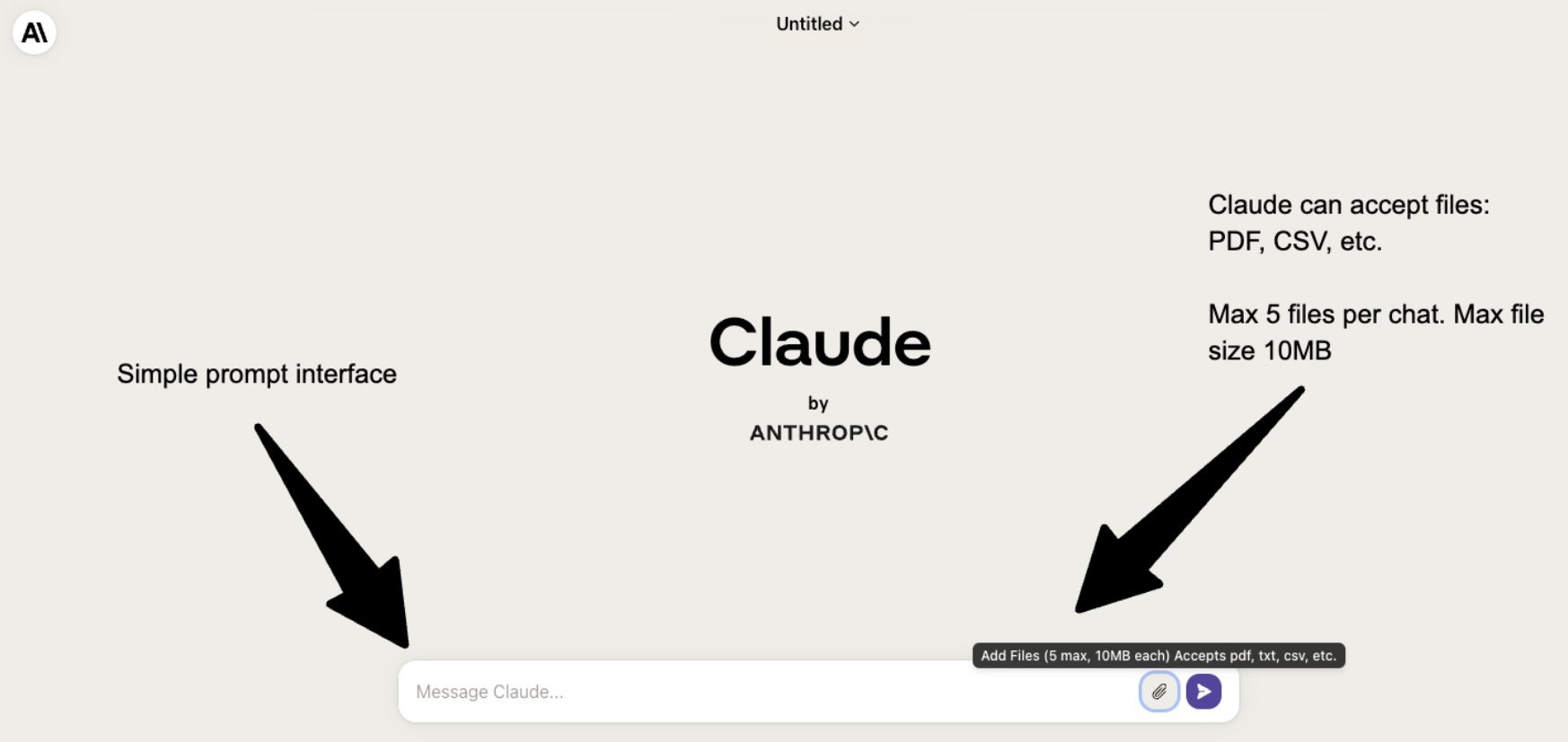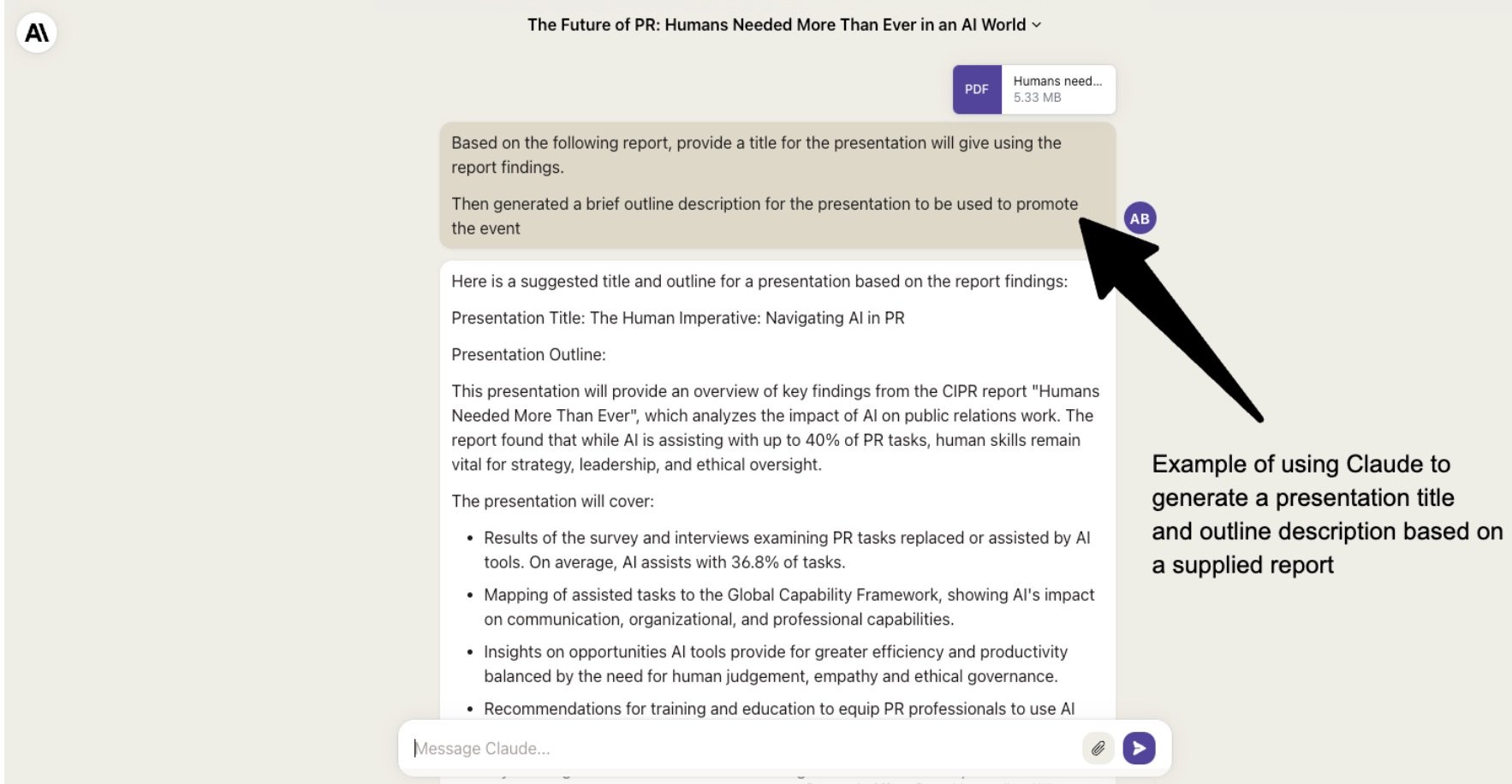This is a chapter from #PRstack: AI tools for marketing, media, and public relations, the latest #FuturePRoof publication. You can buy a copy of the complete book from Amazon in Kindle and print formats. The Kindle version doesn’t include images due to format limitations.
Claude by Andrew Bruce Smith | Practitioner
Claude AI is a conversational AI assistant from Anthropic that leverages a large context window, enabling it to excel at processing, summarising, and integrating large volumes of information to bring new capabilities to public relations workflow.
Claude AI is a next-generation conversational AI assistant developed by Anthropic, an artificial intelligence company focused on building helpful, honest, and harm-free AI systems. First released in April 2022, Claude represents a major advance in natural language processing capabilities while prioritising safety, accuracy, and transparency.
At its core, Claude leverages Anthropic's own large language model called Claude 2, allowing it to understand and generate nuanced, high-quality text. Claude 2 was trained on a diverse dataset of internet text and books using Constitutional AI to minimise harmful responses. As a result, Claude claims to provide significantly more accurate, on-topic, and harmless answers than other AI assistants.
Public relations workflow integration
Claude AI can be a very useful tool for public relations practitioners. Like ChatGPT, Claude can generate content like press releases, website copy, or social media posts tailored to specific audiences. However, its key strength lies in its large (75,000 word) context window. In other words, Claude can receive, analyse and return very large amounts of information. Claude is also capable of ingesting information in a wide variety of file formats, such as PDFs, spreadsheets, and presentations.
Key benefits of Claude's large context window for public relations practitioners include:
Comprehensive analysis
The large context window allows Claude to process extensive documents like research papers, legal briefs, and annual reports. This provides a more complete understanding of complex materials compared to only analysing text snippets. Example use cases include generating first-draft communication plans and pitch responses based on providing all necessary background information and objectives to the AI to allow it to assimilate, analyse and generate an initial recommendation.
Text summarisation
Claude can digest and summarise large volumes of text, condensing books, articles, or documents into concise overviews. This makes it easy to grasp key information quickly.
Knowledge integration
Claude excels at combining information from different sources into a synthesised answer, showcasing strong reading comprehension.
Improved reasoning
With more context available, Claude can better reason about concepts and connections within large bodies of information. This leads to more accurate and nuanced responses.
Natural conversations
The large context window enables Claude to maintain context across long dialogues without "forgetting" earlier parts of the discussion. This facilitates more natural back-and-forth conversations.
Creative writing
Claude can generate longer and more coherent content thanks to the expanded context. This makes Claude better suited for creative writing applications.
Multitasking
The increased context size allows Claude to effectively switch between various tasks and topics during a conversation while retaining relevant information.
The significantly expanded 75,000-word context window empowers Claude to fully utilise its advanced natural language capabilities when processing large volumes of information. This enables a wide range of beneficial applications for public relations tasks that are not easily achievable with more limited context sizes.
Claude is currently available through a free web-based chat interface that allows open-ended conversations. Users can also access Claude through a developer API to integrate its capabilities into other applications.
In September 2023, Anthropic launched Claude Pro, a paid subscription tier offering priority access even during high-demand periods. Claude Pro also unlocks additional features as they are released.
Looking ahead, Anthropic plans to continue expanding Claude's knowledge and skills to handle more advanced tasks. With its constitutional AI approach as a guiding framework, the company aims to usher in a new generation of AI that balances wide-ranging intelligence with robust safety.
Its conversational ability, knowledge integration, harm avoidance, and speed set it apart as one of the most capable and trustworthy AI agents available today. As Claude continues its rapid development, it may well become an integral part of how public relations practitioners leverage and apply AI to their day-to-day workflows.
Andrew Bruce Smith, founder, Escherman
https://www.linkedin.com/in/andrewbrucesmith/
Andrew Bruce Smith is a renowned expert in artificial intelligence and its applications in digital comms, social media, SEO, and analytics. He is Chair of the CIPR’s AI in PR panel, and a sought-after consultant, trainer, conference speaker and commentator on the impact of AI on the public relations industry.
























